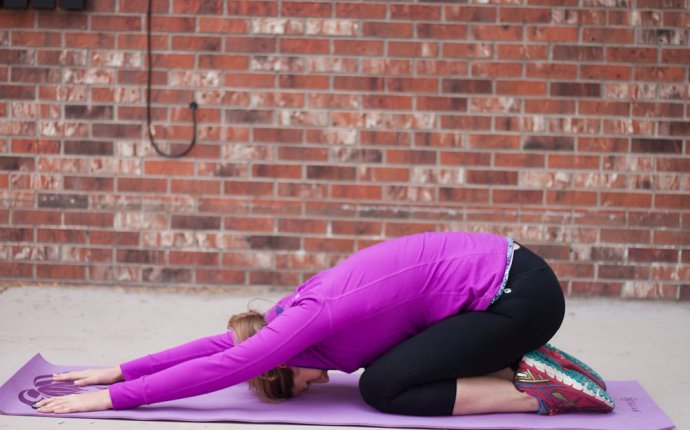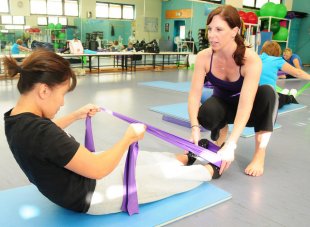
Gentle Stretch for Lower back pain
 Eighty percent of people will experience low back pain at some point in their lives. Most low back pain is of a soft tissue nature and does not require surgery.
Eighty percent of people will experience low back pain at some point in their lives. Most low back pain is of a soft tissue nature and does not require surgery.
Unlike breaking your arm or leg, back pain is debilitating with all movements. If you are experiencing back pain and then move your arm or leg, you will experience further pain in your back.
Back pain can either be localized or referred. If you have localized back pain, a particular section of your back is bothering you. If you have referred back pain, the tension starts in your back and works its way down your leg, affecting your hip, knee and/or ankle.
Do apply heat or ice
Heat or ice should be applied to your lower back when you experience pain. Heat relaxes the muscle and feels good, and ice numbs the area. Apply heat or ice for 20-30 minutes, three times per day. You can apply heat for a longer period of time as long as you are able to move with the heating pad. If you can only use the heating pad while sitting or lying down, the 20-30 minutes, three times per day rule must be followed.
Do gentle backbends
Bend your back gently while standing or lying face down. This helps reduce pressure that may be caused by a disc on the nerve and helps reduce mechanical dysfunction. Do this ten times in a given period as needed. If the pain stays the same or decreases, do another ten gentle bends. If pain increases after ten bends, discontinue the exercise.
 Do use a pillow or towel behind lower back
Do use a pillow or towel behind lower back
Use a pillow or towel behind your lower back while sitting in a chair or car for longer than fifteen minutes. This helps to comfortably support the alignment of the spine.
Do walk
Get up every hour or two, and walk around for five or ten minutes. When you experience back pain, you want to gently move the area. The area, already tight from spasms in the muscle, will slowly ease up from walking. If you do not move, the area will continue to tighten and pain will potentially increase.
Do gentle stretching
Gentle stretching will prevent further tightness and maintain the flexibility of the area. This form of stretching includes single knee to chest, double knee to chest, bending forward in a sitting position and dropping your knees from side to side while lying on your back. Perform these stretches three to five times each, three to five times per day. Hold each stretch for thirty seconds or as long as can be tolerated each time.
Do not lift heavy weights
Do not bend, twist or lift any type of heavy weight. Lifting a heavy object puts extra stress on joints, ligaments and muscles. This could lead to disc herniation, joint dysfunction and increased pain.
Do not stay in bed
Do not stay in bed for long periods of time when you are not sleeping. A lack of movement will cause your back to tense up, increasing muscle trigger points or back spasms.
Do not sit for too long
Do not sit for longer than thirty minutes to one hour at a time. Sitting in one position for longer than an hour will result in tightness and possibly an increase in pain.
Do not over exercise
Lifting heavy weights, running or performing aerobic activity will result in fatigue, leading to further instability of the back and potential injury.
Do not wait to seek help
Within a few days, if acute low back pain persists, see a physical therapist for an evaluation and treatment. Usually, waiting longer than a few days will not spontaneously fix the problem.
Summary
When you experience low back pain, gentle movements are the key, and gentle stretches are the best exercise. If pain does not reduce significantly within a few days, seek treatment from a physical therapist. It is more difficult to treat pain that has persisted for a longer period of time. If pain is addressed quickly, the recovery process is usually shorter.









